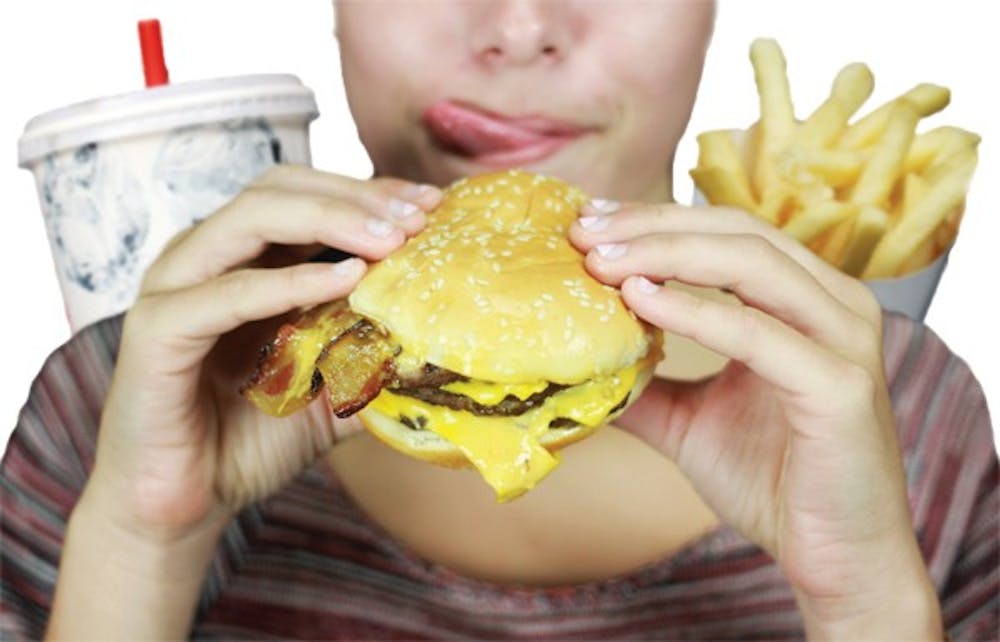Supersize me: Students deal with obesity on and off campus
When freshman Nicole Szachta talks about her 'freshman 15,' its not in the traditional sense. It's the other way around – 15 pounds lost, not gained.
When she returns home to Clinton Township, she hopes her parents are astonished at her transformation.
"Now is the time to make change," Szachta said. "I am uncomfortable with how I look. I want my family to be wowed when I go home. I want them to be shocked. Pizza means nothing to me."
Yet, living in a time of fatty foods that have steadily increased in popularity and size, pizza does mean something to America.
According to Rachael Nelson, professor in the school of health sciences, Americans consume nearly 500 extra calories a day compared to what they did 30 years ago.
The Centers of Disease Control and Prevention said, as of 2010, 35.9 percent of adults were classified as obese in America. When considering adults who were only classified as overweight, having excess body fat below 25 percent of their body mass, the statistic jumps up to 69.2 percent.
Consequences of being overweight can impact college students, Nelson said.
"Even young adults, between the ages of 18 to 25, who are overweight or obese, show signs of insulin resistance (a risk factor for type 2 diabetes), high blood pressure and abnormal cholesterol levels," Nelson said. "Young people are not immune to the consequences of obesity."
Although young adults are not immune, they often act like it.
"When we’re young, the consequences of being overweight and inactive haven’t had time to manifest and we don’t notice any symptoms," Nelson said. "We incorrectly assume everything is OK. Unfortunately, it's often down the road when the signs of diabetes and cardiovascular disease are staring us in the face that we even begin to think about making important lifestyle changes."
Yet changes are often difficult. Szachta said the accessibility of fast food makes it an appealing choice to college students.
"With busy work and school schedules, fast food is an easy alternative. I feel that fast food is much more available compared to years ago. They're practically at every corner," Szachta said. "If I continued with my old ways due to all the available junk food here, I'd be in trouble."
Fast food restaurants might be plentiful, New Era junior Emily White said, but residential restaurants can be just as much of a hangup for newly arrived college students.
"All of the cafeterias on campus give multiple, delicious options for every meal," White said. "Freshmen aren't used to having unlimited choices and servings at their fingertips."
White said the college atmosphere also has made finding time to exercise a more exhaustive process.
"There are many students who were athletes in high school," White said. "Personally, I was used to practicing year-round every day after school, and I never had to think about working out because it was simply built into my day. When I came to college, it took me a while to realize that I needed to have self-discipline and create my own workout schedule."
Northville sophomore Alex Mazzeo said being educated on this issue could help solve the problem.
"There are so many things that can deal with obesity. I wish that we were all more educated on why obesity affects us so quickly," Mazzeo said. "If we just learn what's good for you, finding a happy medium between exercising and eating correctly, we could fight obesity and figure out the underlying problems as well"




